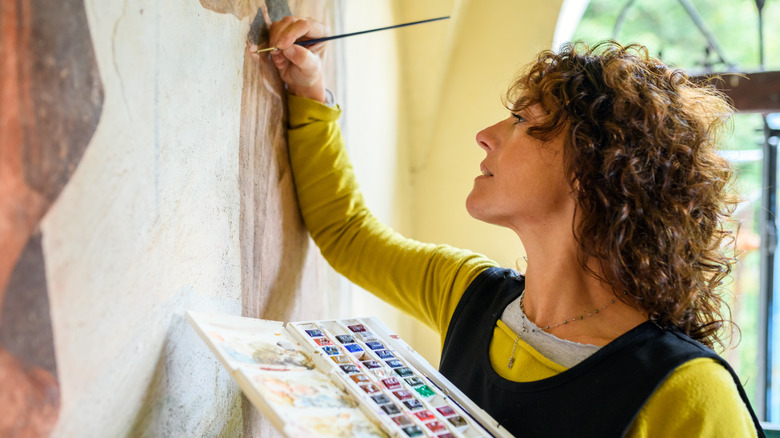Add Life To Your Home With A Trendy Mural In A Not-So Typical Spot
As you consider all the options available to you to bring your home to life, you could paint the living room a different color, significantly rearrange the furniture, commit to buying fresh flowers every week, or create a different mood with new lighting. But a particularly bold move is to paint or hire an artist to create an indoor mural. While this can work beautifully in any home, a brightly-hued mural in a lively design is especially welcome in a darker environment that doesn't get much, if any, sun. Further, there are a few things you should know before painting a mural in your home, as this is quite the commitment.
The unexpected twist is that instead of painting a mural in your bedroom or study, a not-so typical but super-inventive spot is on an interior door. Choosing one side of a door as the canvas for a mural has so many advantages. For instance, it's a welcome surprise for guests, it personalizes your space like nothing else, and it's a much smaller commitment in terms of time, labor, materials, and expenses than a full-blown wall-scale design.
How to get started with your door mural
We'd suggest that, unless you're a graphic designer, working artist, or an experienced and confident amateur painter, you might strongly consider commissioning a pro to paint your mural. Murals are labor intensive and require the right preparation, materials, and attention to detail. You'll be living with this painting for a while, so you want it to sing.
Since we're talking about an original work of art that will be painted directly in your home, there are a number of design factors to take into consideration. After deciding which side of the door to paint, one way to get started is to first consider the existing color palette of the room your mural is facing. Even if you're livening up and deliberately brightening a space, being intentional about your color choices will ensure that your mural is a happy surprise.
Look at a color wheel and find the predominant colors of the fabrics, walls, knickknacks, and furniture near the door. On the color wheel, the colors immediately to the left and right of your predominant colors are called analogous, and they're harmonious. Conversely, the colors directly opposite each other on the color wheel are complementary and can look vibrant when paired with each other. Once you've decided on the right design and colors, either talk to a professional or get busy painting. Once the paint has dried, enjoy your unique accent door design.
